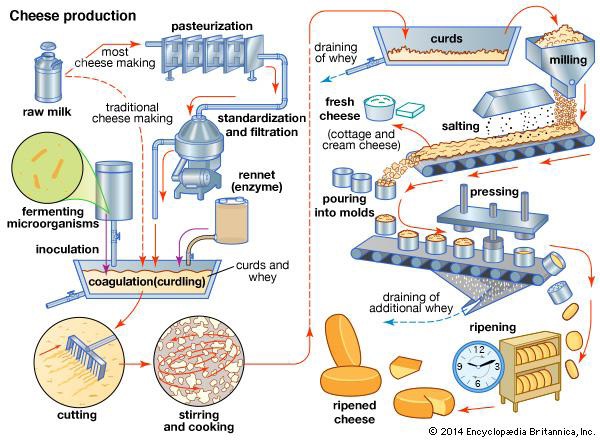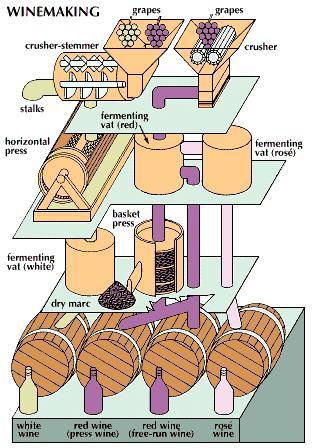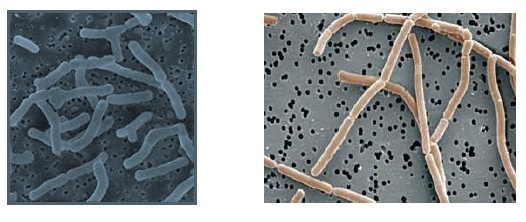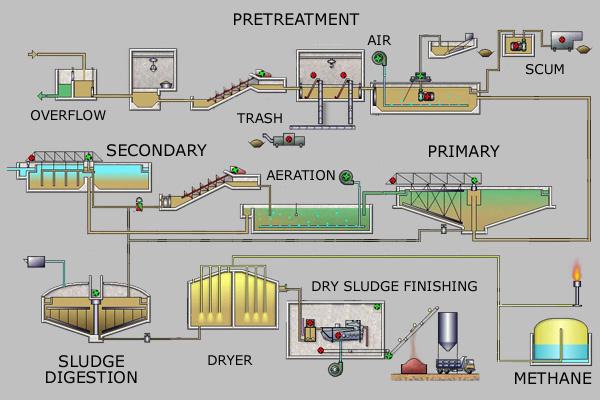





Published on Feb 13, 2025
A microorganism is a microscopic living organism, which may be single celled or multicellular. Microorganism was discovered in 1674 by Antonie van Leeuwenhoek, using a microscope of his own design. They are very diverse and include all the Bacteria and archaea and almost all the protozoa. They also include some fungi, algae, and certain animals, such as rotifers. Microbes are present everywhere – in soil, water, air, inside our bodies and that of other animals and plants and even in Hot springs and Oceans. Some are even observed in vacuum under certain test conditions. Microorganisms are crucial to nutrient recycling in ecosystems as they act as decomposers. As some microorganisms can fix nitrogen, they are a vital part of the nitrogen cycle. Microorganisms are also exploited in biotechnology, both in traditional food and beverage preparation, and in modern technologies based on genetic engineering. Microbes are vital to humans and the environment as they participate in the carbon and nitrogen cycle as well as fulfilling other vital role in virtually all ecosystem such as recycling other organism’s dead remains and waste products through decomposition.
Microorganisms are used in brewing, wine making, baking, pickling and other food-making processes. They are also used to control the fermentation process in the production of cultured dairy products such as yogurt and cheese. The cultures also provide flavour and aroma, and inhibit undesirable organisms.
Milk is often pasteurized to destroy pathogenic microorganisms and to eliminate spoilage and effects induced by bacteria. The milk is then inoculated with fermenting microorganisms and rennet, which promote curdling.
The fermenting microorganisms carry out the anaerobic conversion of lactose to lactic.. In the presence of lactic acid, rennet, or both, the milk protein casein clumps together and precipitates out of solution; this is the process known as curdling, or coagulation. Coagulated casein assumes a solid or gel like structure (the curd), which traps most of the fat, bacteria, calcium, phosphate, and other particulates. The remaining liquid (the whey) contains water, proteins resistant to acidic and enzymatic denaturation (e.g., antibodies), carbohydrates (lactose), and minerals.

Enzymes released by the bacterial cells also influence flavour development during ripening. The curd is then gently heated, causing it to shrink. The degree of shrinkage determines the moisture content and the final consistency of the cheese. Whey is removed by draining or dipping.
Most cheese is ripened for varying amounts of time in order to bring about the chemical changes necessary for transforming fresh curd into a distinctive aged cheese. The ripening of cheese is influenced by the interaction of bacteria, enzymes, and physical conditions in the curing room. The speed of the reactions is determined by temperature and humidity conditions in the room as well as by the moisture content of the cheese.
The process of winemaking involves numerous stages starting with the grapes being harvested, taken into a winery and then prepared for fermentation. At this stage, red wine is created during the fermentation of the pulp (or "must") and skins of the red or black grapes, which gives the wine its colour. White wine, on the other hand, does not include the grape skins in the fermentation process; only the juices are extracted. To start primary fermentation, a process that typically takes between one to two weeks, yeast is added which converts the sugars in the grape juice into alcohol and carbon dioxide, which then evaporates into the atmosphere.

The produced liquid, which is known as "free wine," is then pumped into tanks and the skins are pressed in order to extract the remaining wine and juice. This wine, known as the "press wine," can be added to the free wine to bring more character and longevity to the wine. Secondary fermentation is the next step, which is the bacterial fermentation involving the conversion of malic acid to lactic acid. This decreases the amount of acid in the wine and softens the taste. The wine can then be transferred to oak barrels for maturation, with further adjustments to taste and colour being made prior to filtering and bottling.
Curds are a dairy product obtained by coagulating milk in a process called curdling. The coagulation can be caused by adding rennet or any edible acidic substance such as lemon juice or vinegar, and then allowing it to sit. The increased acidity causes the milk proteins to tangle into solid masses. Lactobacillus is a genus of bacteria which can convert sugars into lactic acid by means of fermentation. Milk contains a sugar called lactose, a disaccharide (compound sugar) made by the glycosidic bonding between glucose and galactose (monosaccharide). When pasteurized milk is heated to a temperature of 30-40 °C, or even at room temperature or refrigerator temperature, and a small amount of old curd or whey added to it, the lactobacillus in that curd or whey sample starts to grow. These convert the lactose into lactic acid, which imparts the sour taste to curd. Raw milk naturally contains lactobacillus. And in this way Curd is made.
Microbes play a Major role in treating million of Gallons of wastewater everyday across the globe. Water pollution is due to presence of particulate matter or presence of inorganic or organic Compounds or because of too many or non native microorganisms. Sewage Treatment consists of three stages called Primary, Secondary and Tertiary Treatment.
In the primary sedimentation stage, sewage flows through large tanks, commonly called “pre-settling basins”, “primary sedimentation tanks” or “primary clarifiers". The tanks are used to settle sludge while grease and oils rise to the surface and are skimmed off. Primary settling tanks are usually equipped with mechanically driven scrapers that continually drive the collected sludge towards a hopper in the base of the tank where it is pumped to sludge treatment facilities.


Grease and oil from the floating material can sometimes be recovered for saponification (soap making).
Secondary treatment is designed to substantially degrade the biological content of the sewage which are derived from human waste, food waste, soaps and detergent. The majority of municipal plants treat the settled sewage liquor using aerobic biological processes. To be effective, the biota requires both oxygen and food to live. The bacteria and protozoa consume biodegradable soluble organic contaminants (e.g. sugars, fats, organic short-chain carbon molecules, etc.) and bind much of the less soluble fractions into floc. Secondary treatment systems are classified as fixed-film or suspended-growth systems.
The purpose of tertiary treatment is to provide a final treatment stage to further improve the effluent quality before it is discharged to the receiving environment (sea, river, lake, wet lands, ground, etc.). More than one tertiary treatment process may be used at any treatment plant. If disinfection is practised, it is always the final process. It is also called “effluent polishing.”
Microorganisms are used in fermentation to produce ethanol, and in biogas reactors to produce methane. Scientist are researching the use of algae to produce liquid fuels and bacteria to convert various form of agricultural and urban waste into usable fuels.
Algae fuel or algal bio fuel is an alternative to liquid fossil fuels that uses algae as its source of energy-rich oils. Several companies and government agencies are funding efforts to reduce capital and operating costs and make algae fuel production commercially viable. Like fossil fuel, algae fuel releases CO2 when burnt, but unlike fossil fuel, algae fuel and other bio fuels only release CO2 recently removed from the atmosphere via photosynthesis as the algae or plant grew. The energy crisis and the world food crisis have ignited interest in alga culture (farming algae) for making biodiesel and other bio fuels using land unsuitable for agriculture. Among algal fuels' attractive characteristics are that they can be grown with minimal impact on fresh water resources can be produced using saline and wastewater, have a high flash point and are biodegradable and relatively harmless to the environment if spilled.
Cellulosic ethanol is a biofuel produced from wood, grasses, or the non-edible parts of plants. It is a type of biofuel produced from lignocellulose, a structural material that comprises much of the mass of plants. Lignocellulose is composed mainly of cellulose, hemicellulose and lignin. Corn stover, switchgrass, miscanthus, woodchips and the by products of lawn and tree maintenance are some of the more popular cellulosic materials for ethanol production. Production of ethanol from lignocellulose has the advantage of abundant and diverse raw material compared to sources like corn and cane sugars, but requires a greater amount of processing to make the sugar monomers available to the microorganisms that are typically used to produce ethanol by fermentation.The main advantage of Cellulosic ethanol is that it reduces greenhouse gas emissions (GHG) by 85% over reformulated gasoline.
Biogas, naturally occurring gas that is generated by the breakdown of organic matter by anaerobic bacteria and is used in energy production. Biogas is primarily composed of methane gas, carbon dioxide, and trace amounts of nitrogen, hydrogen, and carbon monoxide. Biogas differs from natural gas in that it is a renewable energy source produced biologically through anaerobic digestion rather than a fossil fuel produced by geological processes. Biogas occurs naturally in compost heaps, as swamp gas, and as a result of enteric fermentation in cattle and other ruminants. Biogas produced in anaerobic digesters can be burned to generate heat or used in combustion engines to produce electricity. Organic material used to produce biogas industrially includes animal waste, such as manure and sewage, and municipal solid waste (MSW) harnessed from landfills.

Animal and plant wastes can be used to produce biogas. They are processed in anaerobic digesters as a liquid or as a slurry mixed with water. Anaerobic digesters are generally composed of a feedstock source holder, a digestion tank, a biogas recovery unit, and heat exchangers to maintain the temperature necessary for bacterial digestion. Heat is usually required in digesters to maintain a constant temperature of about 35 °C (95 °F) for bacteria to decompose the organic material into gas. The use of biogas is a green technology with environmental benefits. Biogas technology enables the effective use of accumulated animal waste from food production and of municipal solid waste from urbanization. The conversion of animal waste into biogas reduces production of the greenhouse gas methane, as efficient combustion replaces methane with carbon dioxide.
Use in production of chemicals, enzymes ,antibiotics etc. Many microbes are used for commercial and industrial production of chemicals, enzymes and other bioactive molecules. Examples of organic acid produced include Acetic acid : Produced by the bacterium Acetobacter aceti and other acetic acid bacteria (AAB) Acetic acid bacteria (AAB) are bacteria that derive their energy from the oxidation of ethanol to acetic acid during fermentation. They are Gram-negative, aerobic, rod-shaped bacteria. They are not to be confused with the genus Acetobacterium, which are anaerobic homoacetogenic facultative autotrophs and can reduce carbon dioxide to produce acetic acid, for example, Acetobacterium woodii . Butyric acid (butanoic acid): Produced by the bacterium Clostridium butyricum.
Clostridium butyricum is a strictly anaerobic endospore-forming Gram-positive butyric acid producing bacillus subsisting by means of fermentation using an intracellularly accumulated amylopectin-like α-polyglucan (granulose) as a substrate. It is uncommonly reported as a human pathogen and widely used as a probiotic in Asia (particularly Japan). C. butyricum is a soil inhabitant in various parts of the world, has been cultured from the stool of healthy children and adults, and is common in soured milk and cheeses. Lactic acid : Lactobacillus and others commonly called as lactic acid bacteria (LAB) The lactic acid bacteria (LAB) comprise a clade of Gram-positive, low-GC, acid-tolerant, generally non-sporulating, non-respiring rod or cocci that are associated by their common metabolic and physiological characteristics.
These bacteria, usually found in decomposing plants and lactic products, produce lactic acid as the major metabolic end-product of carbohydrate fermentation. This trait has, throughout history, linked LAB with food fermentations, as acidification inhibits the growth of spoilage agents. Proteinaceous bacteriocins are produced by several LAB strains and provide an additional hurdle for spoilage and pathogenic microorganisms. Furthermore, lactic acid and other metabolic products contribute to the organoleptic and textural profile of a food item. The industrial importance of the LAB is further evinced by their generally recognized as safe (GRAS) status, due to their ubiquitous appearance in food and their contribution to the healthy microflora of human mucosal surfaces.
Citric acid : Produced by the fungus Aspergillus niger .Aspergillus niger is a fungus and one of the most common species of the genus Aspergillus. It is ubiquitous in soil and is commonly reported from indoor environments, where its black colonies can be confused with those of Stachybotrys (species of which have also been called "black mould"). Antibiotics are chemical substances, which are produced by some microbes and can kill or retard the growth of other (disease-causing) microbes. You are familiar with the commonly used antibiotic Penicillin. Alexander Fleming while working on Staphylococci bacteria, once observed a mould growing in one of his unwashed culture plates around which Staphylococci could not grow. He found out that it was due to a chemical produced by the mould and he named it Penicillin after the mould Penicillium notatum. However, its full potential as an effective antibiotic was established much later by Ernest Chain and Howard Florey. This antibiotic was extensively used to treat American soldiers wounded in World War II. Fleming, Chain and Florey were awarded the Nobel Prize in 1945, for this discovery.
Microbes are used for preparation of bioactive molecules and enzymes. Streptokinase produced by the bacterium Streptococcus and modified by genetic engineering is used as a clot buster for removing clots from the blood vessels of patients who have undergone myocardial infarctions leading to heart attack. Cyclosporin A is a bioactive molecule used as an immunosuppressive agent in organ transplantation Stains produced by the yeast Monascus purpureus is commercialised as blood cholesterol lowering agents which acts by competitively inhibiting the enzyme responsible for synthesis of cholesterol.
One of the most important roles of microbes is breaking up the complex substances in decaying plants and animals so that they can be used again by living plants. This involves microbes as catalysts in a number of natural cycles, among the most prominent being the nitrogen, and sulfur cycles.
Proteins are the basic stuff of organic tissues, and nitrogen is an essential element of all proteins. The availability of nitrogen in forms that plants can use is a basic determinant of the fertility of soils; the role of microbes in facilitating the nitrogen cycle is therefore of great importance. When a plant or animal dies, microbes break up the complex proteins, polypeptides, and nucleic acids in their bodies and produce ammonium, ions, nitrates, and nitrites that plants then use to build their body tissues.
Both bacteria and blue-green algae can fix nitrogen directly from the atmosphere, but this is less vital to plant development than the symbiotic relationship between the bacteria genus Rhizobium and leguminous plants and certain trees and shrubs. In return for secretions from their host that encourage their growth and multiplication, Rhizobia fix nitrogen in nodules of the host plant’s roots, providing nitrogen in a form usable by the plant.
Microbes also participate in the sulfur cycle, mostly by breaking up the naturally abundant sulfur compounds in the soil so that this vital element is available to plants. Sulfur cycle, is the circulation of sulfur in various forms through nature. Sulfur occurs in all living matter as a component of certain amino acids. It is abundant in the soil in proteins and, through a series of microbial transformations, ends up as sulfates usable by plants.
Sulfur-containing proteins are degraded into their constituent amino acids by the action of a variety of soil organisms. The sulfur of the amino acids is converted to hydrogen sulfide (H2S) by another series of soil microbes. In the presence of oxygen, H2S is converted to sulfur and then to sulfate by sulfur bacteria. Eventually the sulfate becomes H2S.
Microbes are a very important component of life on earth. Not all microbes are pathogenic. Many microbes are very useful to human beings. We use microbes and microbially derived products almost every day. Microbes are essential in processes like Wine making and Cheese making. Bacteria called lactic acid bacteria (LAB) grow in milk to convert it into curd. The dough, which is used to make bread, is fermented by yeast called Saccharomyces cerevisiae. Certain dishes such as idli and dosa, are made from dough fermented by microbes. Bacteria and fungi are used to impart particular texture, taste and flavour to cheese.
Many microbes are used for commercial and industrial production of chemicals, enzymes and other bioactive molecules .Antibiotics like penicillins produced by useful microbes are used to kill disease-causing harmful microbes. For more than a hundred years, microbes are being used to treat sewage (waste water) by the process of activated sludge formation and this helps in recycling of water in nature. Microorganisms are used in fermentation to produce ethanol, and in biogas reactors to produce methane Methanogens produce methane (biogas) while degrading plant waste. Biogas produced by microbes is used as a source of energy in rural areas. It is clear from the diverse uses human beings have put microbes to that they play an important role in the welfare of human society.
Biological Science: Third Edition By, N. P. O. Green (Author), G. W. Stout (Author), D. J. Taylor (Author), R. Soper (Editor)
Exploring Biology By, Ella Thea Smith
NCERT Text Book
Tell Me Why
Encyclopaedia Britannica